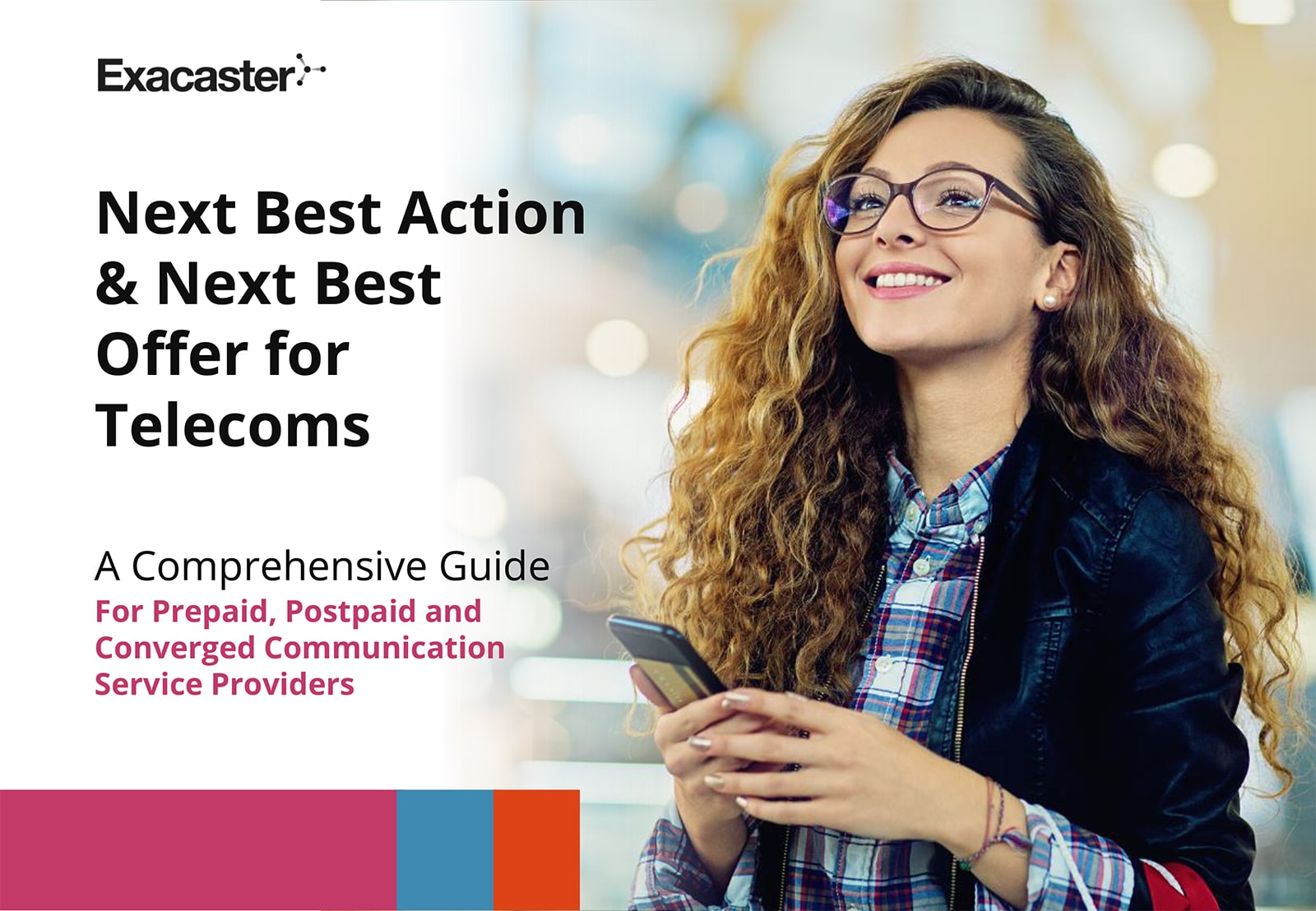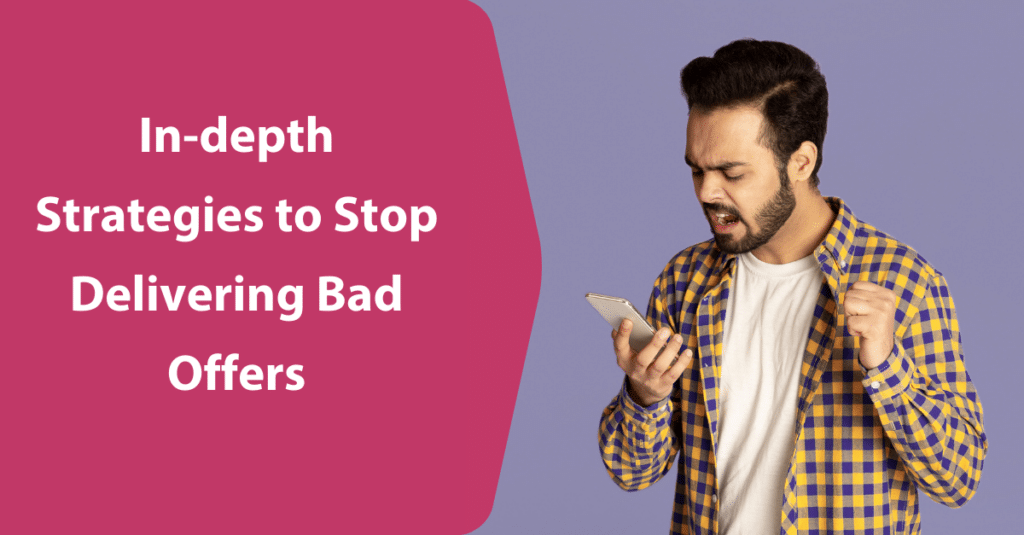Imagine that you work as a customer service operator for a telecommunications company. All day you receive phone calls or chat messages from customers, and you help them with all sorts of inquiries.
They might call about a last bill check, bad network coverage, or to request a plan upgrade. Since situations vary, you’ve learned to tailor your response to fit each situation. You don’t address every inquiry with the same answer or approach.
Now, let’s say that the company’s marketing department suddenly decides to “increase both customer satisfaction AND profit” by introducing a killer-offer: an ALL-FLAT (unlimited voice, SMS, and data) plan with a 2-year contract—all for the price of a medium plan.
To make the business case work, you’re told ALL customers must be approached with the offer. All inbound and outbound communication must end with this “killer offer”.
Some “Killer Offers” Can Kill Your Business
The scenario described above doesn’t make sense in every context, does it? For instance, upselling an angry customer who barely uses the service could kill the contract. In this case, it could mean lower revenue and higher cost for the company.
The so-called “killer offer” didn’t take context and timing into consideration. The when and how it was delivered needs a lot of improvement.
The truly “killer offer” shows up in the right context, that is, the customer’s context. Offers sell best when they keep context in mind—and are then delivered on the right channel.
Customer-Centric Context
Every customer is unique! Does this mean each one must be treated differently all the time? Certainly not! The key is to treat each customer appropriately in any given context. Customers may be grouped to receive certain types of actions and offers according to their circumstances.
Defining these groups includes understanding their shared needs and expectations. This gives you answers to key customer-centric questions.
Pay Close Attention To Big Events
People are driven by big events and moments. Customer lifespan is also driven by important events, such as:
- Becoming a customer
- Using the service for the first time
- Having a first bad experience
- Paying bills
- Not paying a bill on time
- and so on…
Each event places the customer within a context which helps determine the Next Best Action. It’s crucial to identify key events and capture opportunities. You can even predict events sometimes.
To understand customer context, there are several approaches.
Approach 1: Detect important events & leverage segmentation
Customer segmentation by lifecycle and usage patterns can be used by telcos to define what to do next and when. Accurately reading the context of the event makes a huge difference.
For example, a customer who barely uses their service with a contract ending in two weeks should be treated differently from a customer who has reached the midpoint of a plan that perfectly fits their needs. One might get a simple plan renewal offer. The other might be encouraged to purchase another plan for someone else in their household.
By adding in segmentation according to device age and type, you can package an offer that will make them scream, “Shut up and take my money!”
Get those power insights using segmentation
Nobody likes to be labelled, however, similar people may share similar qualities, hobbies, needs, and expectations. Moreover, we as customers sometimes label ourselves to ground our expectations, for example:
- “I’ve been your loyal customer for more than 3 years. What you can offer?”
- “I‘m old school. I still use my old Nokia flip phone”
- “I‘m not happy with the service you provide”
What does all this say? There‘s plenty here to keep the marketing department and client base managers busy for the next 3 months!
Basically, customer information can be leveraged using the following types of segmentation:
1. Lifecycle. Every relationship has its own lifecycle, and each lifecycle phase has its own challenges and opportunities.
- “New”– The dating phase (first 3 months). An exploration period when not much is known.
- “Growing” – Getting to live together (up to 1 year). You let them be independent but also make periodic checks to ensure that relationships are intact.
- “Mature“ or “On contract” – The wedding vows (period depends on the market). The relationship is stable. Customers know what they need, but sometimes what they need is not what they want. Make sure you have something to offer—both what they want and what they need.
- “End of contract” and “Off contract” – When the relationship (subscription) is close to an end. A crisis is just around the corner. There are many external temptations, and this is the time to work more.
2. Consumption. Do you have what they need? This can be determined by checking how much of what they buy is used.
- “Underusing” – The product is “too big”. The customer barely uses it (e.g. megabytes in the plan). This may cause problems in the future and feelings of being tricked, like buying sand in a desert.
- “Righ amount” – The Customer has what is needed which is a good foundation for a healthy relationship.
- “Overusing” – The customer is close or even completely using up what’s purchased. There‘s a constant feeling of being limited. This might help you to upsell the customer, but it also puts you at risk of the customer seeking something else in the market.
3. Churn. What is the chance of customer leaving you? “Low“? “Medium“? Or maybe even “High“? Here it‘s useful to adopt using propensity modelling to score customers on their likelihood to churn and stay one step ahead (see Approach 3 below).
Approach 2: Detect significant events with IT system triggers
Another approach is to watch customer behavior. A good shopkeeper watches store visitors. If a customer spends time looking at a product on the shelf, the shopkeeper might say, “Ah! I see you interested in one of our best products. Would you like to take a closer look?”
The telecom can do the same thing by detecting what customers do online and then proactively address the situation. For example, a customer might:
- Put a product in their online shopping cart but not finish the purchase.
- Use up all the data in their plan during first week of the month.
- Experience network problems as a call was cut three times in a row.
For each situation, different actions can be deployed automatically to secure a deal, upsell, or retain the customer.
Approach 3: Detect important events with propensity modelling
How cool would it be to accurately predict the future? Maybe it‘s impossible, but what if you knew that some things can be foreseen with a high level of accuracy?
“Propensity modelling” enables you to be prepared for an upcoming event, and also improves the management of your (almost always) limited resources.
Here are two propensity models which you, as customer base manager, should consider:
- Churn prediction. Knowing why a customer is about to leave you provides powerful insight that enables you to use proper retention tools. However, don’t make a mistake by predicting the obvious. Predict the future, not the past. Wink!
- Chance to upsell. Nowadays, when labor is the most expensive resource, you should target customers that are most likely to convert. The days of door-to-door salesmen are gone. Knowing which customers are more likely to convert gives you the benefit of targeting them first. You‘re welcome!
Machine learning models can target customers based on their historical behavior patterns. These models can then determine the likelihood of customer behavior, such as stopping service use or purchasing a product.
By using the vast amount of customer data you already have, you can know why you need to contact a specific customer, with a specific offer, via a specific channel, and at a specific moment. These models are very precise, and they’re built with a high chance of success.
The Right Channels For Tactical Marketing
Once you establish context and strategy, you need to select tactics. Would you rather send infantry to hand-deliver a leaflet to every door of the city or drop thousands of leaflets from the air?
Channels are the tactics you choose to get the job done. Imagine that your operators are your infantry. Meanwhile, your IT air force can send thousands of emails or messages.
Still, not all channels work in every circumstance. If you present a “killer-offer” on a self-service app under a section named “personalized offer”, in a week you’ll be asking, “Why isn’t this selling?”. So, pick the right channel to match the context.
For most telecoms, the 5 TOP channels are:
- Good old Email – Effective and visual, it’s still the most popular and accepted means to deliver a message.
- Fast as a bullet SMS – Cheap, short, and very effective if targeted well. But miss the timing or fail to catch the eye, and it’s gone in the abyss of unread messages.
- A food soldier cold Call – This can be seen as intrusive, however, cold calls can be made to work. If well planned, they offer the best chance of success, but this tactic is expensive.
- The unlimited App and Web – It’s the customer’s personal space. Information can be personalized to a maximum, and consent is obvious. The problem: how do you attract the customer if no content is waiting for them?
- The notorious Notification – Everybody uses them, but many don’t understand how. It’s similar to SMS, but more visual and with strong calls for action.
All of these tactics can be brought together into a powerful omnichannel. It’s your superweapon, Mega robot, Iron Man marketing tool. And if one object could be selected as a symbol of modern times, it would be the smartphones.
Want to call, send an email, SMS, or push notifications? Want to get instant feedback or stimulate an action? It all happens on mobile.
Last, But Not Least – Always Keep Customer Context in Mind
In the morning, during lunch, at night, or after a big event – can you effectively read each context to engage customers on their terms?
Do you want to cross-sell or to retain the customer? A customer-centric approach gives you the best answers. The right offer, at the right time, on the right channel, will produce superior results.
Also, common sense isn’t always so common, and “best practices” are just a starting point. Use A/B testing to identify the optimal scenario and improve continuously. Then implement a truly personalized approach to providing the Next Best Offer.
Meet the author

Petras Šeika is an experienced Project Manager currently driving global initiatives for our international telco client. Petras’ deep knowledge of customer base management in the telco industry provides invaluable insights for Exacaster’s customer management and product development.
What to read next?

Download NBO & NBA eGuide: A step-by-step framework on how to succeed in your process
- The ins and outs of Next Best Offer & Next Best Action
- 6 steps to successful implementation
- How to build a business case for NBA & NBO





